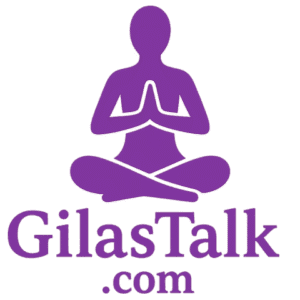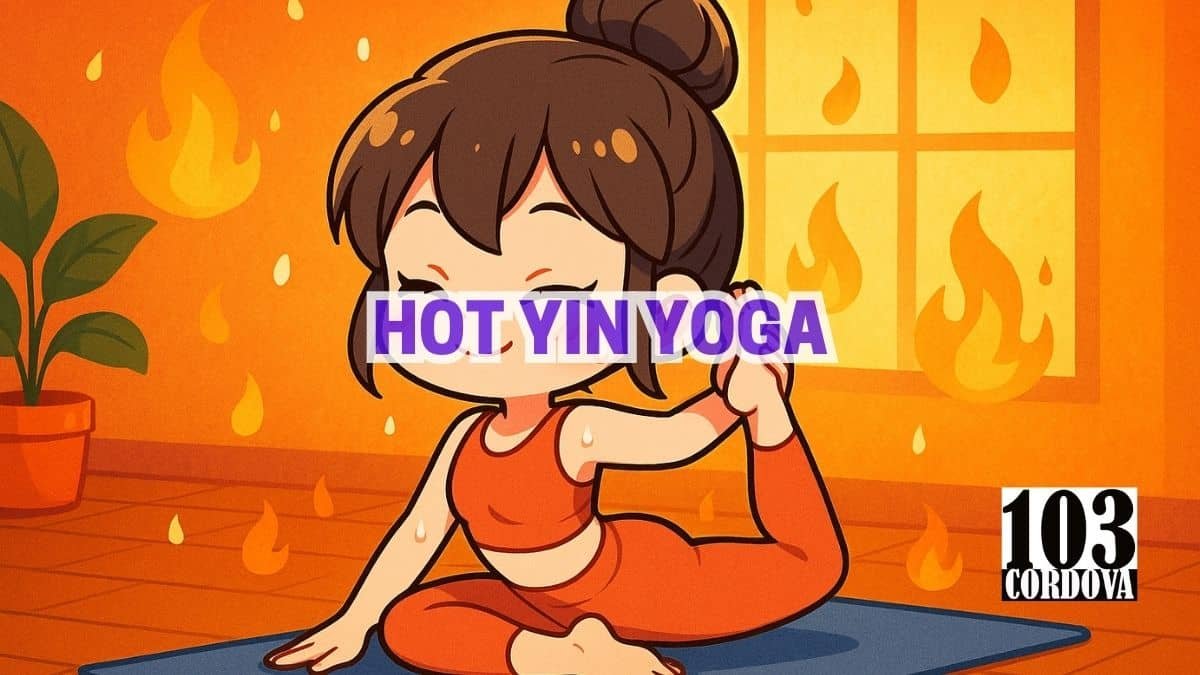Hot Yin Yoga is a variation of traditional Yin Yoga practiced in a heated room.
While both styles focus on long pose holds and deep stretches, the heated environment adds several new elements.
Traditional Yin Yoga emphasizes calmness, breath, and stillness in a cooler space.
In contrast, Hot Yin Yoga increases physical intensity through higher room temperatures.
We’ll explain how the two practices differ in temperature, physical effects, mental focus, and safety.
1. Heated Room Environment Vs. Cool Room
Traditional Yin Yoga is done in a room with normal or slightly cool temperatures, around 70 degrees Fahrenheit.
The cooler space helps maintain a relaxed, grounded feeling throughout the session.
In contrast, Hot Yin Yoga is performed in a room heated to 90 to 105 degrees.
This temperature affects how the body feels and behaves in each pose.
The heat changes the practice from purely meditative to something more physically engaging.
🧘 Why Hot Box Yoga Is Revolutionizing Traditional Yoga Practices
2. Increased Intensity Due To Heat
The added heat in Hot Yin Yoga raises body temperature and heart rate, even with little movement.
This creates a stronger sense of effort compared to traditional Yin Yoga.
Muscles become more pliable quickly, allowing for deeper stretching.
However, the physical demands can make the practice feel more like light exercise.
Traditional Yin Yoga stays gentler, emphasizing stillness over intensity.
🧘 What to Look for When Buying Hot Yoga Shorts: Fabric, Fit, and Functionality
3. Sweating And Dehydration Risks
In Hot Yin Yoga, sweating starts quickly and may continue through the entire session.
While some enjoy the cleansing feeling, the body loses a lot of fluids.
This loss increases the chance of dehydration if water isn’t replaced.
Symptoms like dizziness or fatigue can occur if you’re not careful.
Traditional Yin Yoga, with minimal sweating, rarely presents this concern.
🧘 Can Hot Yoga Shorts For Women Be Stylish and Functional at the Same Time?
4. Yin Philosophy Vs. Heat-Enhanced Practice
Traditional Yin Yoga emphasizes slowing down, staying present, and feeling the body’s natural limits.
It focuses on the mental and emotional aspects of stillness.
Hot Yin Yoga adds a physical challenge, which can shift attention to bodily effort.
This combination can either support or distract from meditative goals, depending on the person.
The philosophy remains, but the experience changes with heat.
🧘 How Does a Hot Yoga Teacher Create a Safe and Effective Practice Environment?
5. Warm Muscles For Deeper Stretches
In a heated room, muscles warm up faster, making it easier to stretch further.
This can feel rewarding and encourage deeper pose entry.
In contrast, a cooler environment requires more patience to ease into poses.
While heat can make the body feel open, it may hide signs of strain or fatigue.
Practicing mindfully is key in both settings, especially when flexibility increases.
🧘 How to Choose the Best Clothing for Hot Yoga to Stay Cool and Comfortable
6. Higher Risk Of Overstretching
Warm muscles can create a false sense of safety, leading to overstretching.
Connective tissue and joints may not be ready to match that flexibility.
Injuries can happen when people go too far without noticing discomfort.
In traditional Yin Yoga, cooler temperatures help signal natural limits earlier.
This makes it easier to stay within safe, effective ranges.
🧘 How Does Ashtanga Yoga Teachers Training Deepen Your Personal Practice and Teaching Skills?
7. Long Pose Holds With Heat-Assisted Flexibility
Both Hot Yin and traditional Yin Yoga include long pose holds, often lasting 3 to 5 minutes.
In Hot Yin Yoga, heat allows the body to soften into these poses faster.
However, going deeper too soon can create pressure in joints and ligaments.
Using props helps reduce risk and support alignment.
In both styles, the goal is to relax while protecting sensitive areas.
🧘 Why Yoga Is Important for Mental Health and Stress Relief
8. Physical Challenge Combined With Meditation
Hot Yin Yoga blends physical effort with meditative stillness.
The heat creates a steady challenge even without movement.
At the same time, long holds encourage quiet focus and slow breathing.
This makes it feel like both exercise and mental rest.
Those seeking more from their yoga sessions may enjoy this dual effect.
🧘 Why Balanced Hot Yoga Is an Effective Stress-Reduction Practice
9. Importance Of Hydration And Safety
Staying hydrated is essential in Hot Yin Yoga due to the high temperatures.
The risk of dizziness, muscle cramps, or fatigue is higher without enough fluids.
It’s important to drink water before and after class and take breaks if needed.
Listening to your body becomes even more important in a heated setting.
Safety steps like hydration and pacing make a big difference.
10. Fascia Focus Plus Detox Through Sweating
Yin Yoga targets fascia, the soft tissue that connects and supports muscles.
Heat in Hot Yin Yoga helps this tissue loosen more quickly.
The sweating that happens also removes fluids and salts, which some see as a mild detox.
Though research is mixed on detox claims, many feel refreshed afterward.
The focus on fascia remains, but the heated version adds a layer of physical release.
🧘 Yoga Studio Based in Marikina
💡 Conclusion
Hot Yin Yoga and traditional Yin Yoga share similar goals but create different experiences.
The heated room changes how the body reacts, stretches, and releases tension.
Hot Yin Yoga brings more intensity and requires more attention to hydration and safety.
Traditional Yin Yoga offers a calmer, more grounded environment with fewer physical risks.
Choosing the best style depends on personal needs, comfort level, and goals.
🧘 Our Services
Join our Yoga Classes for all ages at 103 Cordova Tower, Marquinton Residences, Cirma Street, Sto. Niño, Marikina City.
We welcome beginners, kids, adults, and seniors to enjoy a safe and fun yoga practice.
Our sessions help improve strength, balance, and focus in a friendly setting.
You can reach us easily through Facebook, our website’s contact form, or by calling 09176225780.
Come and experience how yoga can help you feel better every day.

